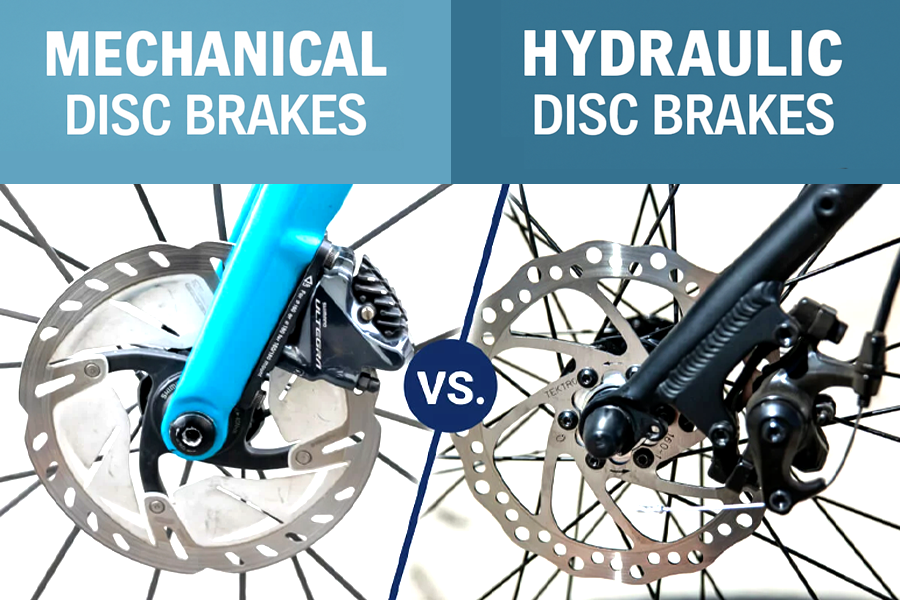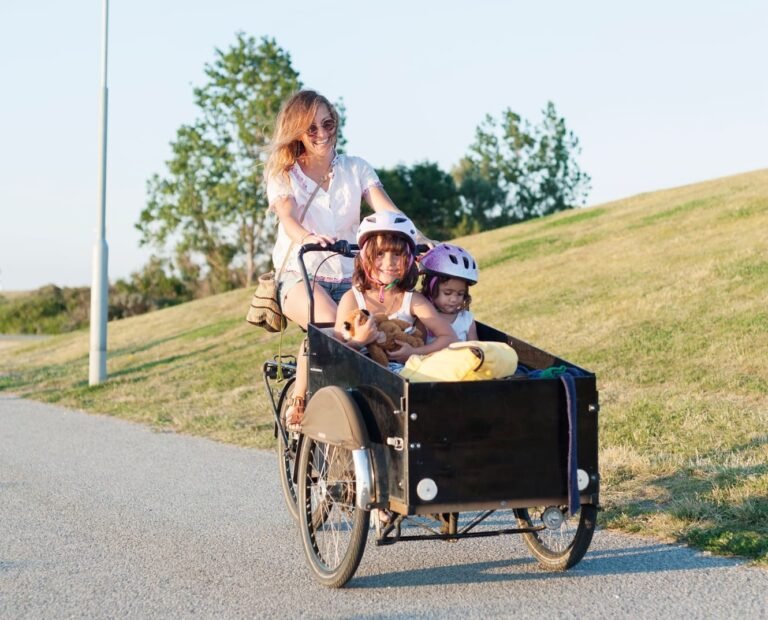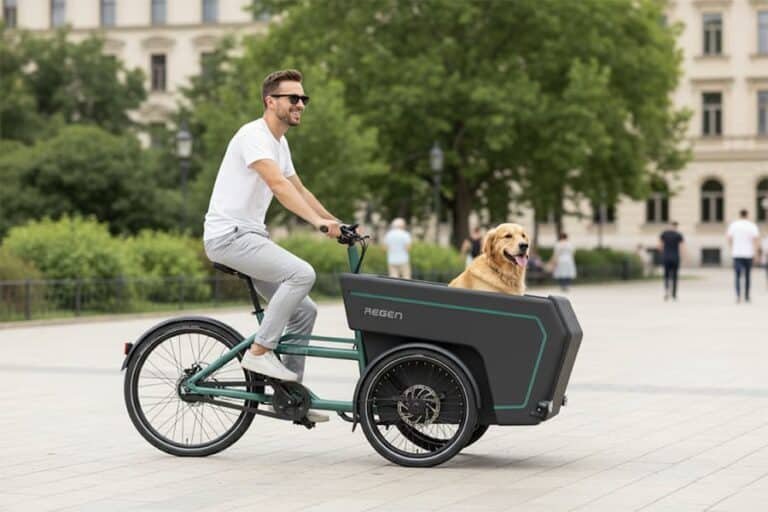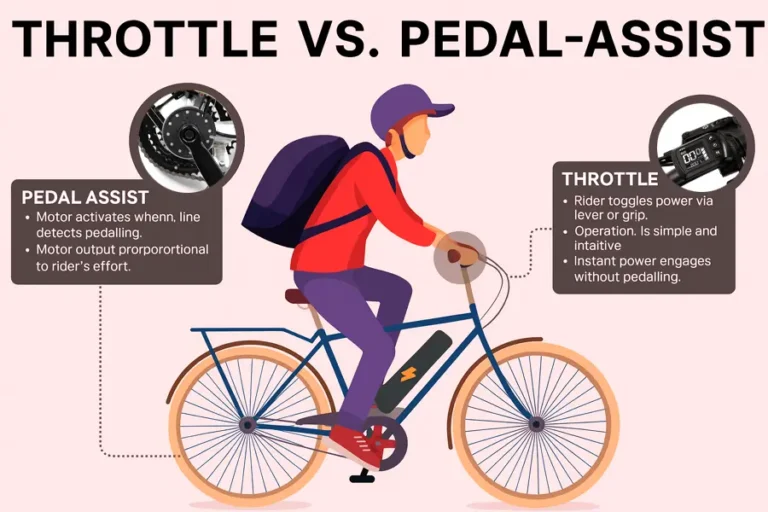In the evolving world of cycling, especially with the growing demand for electric and cargo bikes, choosing the right braking system is critical. Whether you’re commuting on a city e-bike, tackling trails on an electric mountain bike (e-MTB), or transporting loads with a cargo bike, the type of brake system—mechanical disc brakes or hydraulic disc brakes—directly affects safety, performance, and maintenance.
This article provides a clear, professional, and evidence-based comparison between mechanical and hydraulic disc brakes, supported by recent research and tailored specifically to different bike types—mountain, city, and cargo—both electric and non-electric.
1. Definitions: What Are Mechanical and Hydraulic Disc Brakes?
Mechanical Disc Brakes
Mechanical disc brakes use a steel cable to pull the brake caliper and apply pressure to the brake rotor, slowing the wheel. The mechanism is similar to traditional rim brakes but applied to a disc rotor attached to the wheel hub.

• Advantages:
- Simple and straightforward design.
- Easier to perform DIY maintenance and repairs without specialized tools.
- Lower initial cost, making them accessible for budget-conscious users.
• Disadvantages:
- Limited braking force, particularly noticeable under wet conditions or when carrying heavy loads.
- Cable stretch, friction, and corrosion can reduce braking performance over time, necessitating frequent adjustments.
- Reduced modulation, which means less precise control over braking intensity.
Hydraulic Disc Brakes
Hydraulic disc brakes operate using a sealed fluid system. When the brake lever is pressed, it pushes hydraulic fluid through a hose to the caliper, which pushes pistons against the rotor.
• Advantages:
- Stronger braking power, which is crucial for heavy loads or high speeds.
- Exceptional modulation, allowing precise control over braking intensity.
- Self-adjusting pads compensate for wear, maintaining consistent brake feel.
- Excellent performance in adverse weather conditions, including rain and snow.
• Disadvantages:
- Higher initial cost and more expensive replacement parts.
- Specialized tools and expertise required for maintenance (such as bleeding the hydraulic system).
- More complex repairs, need professional knowledge for maintenance, especially challenging during field conditions or remote travel.
2. Comparison by Bike Type and Use Case
Electric Mountain Bikes (e-MTBs)
Mountain biking demands high braking power due to varied terrains, steep descents, and higher speeds. The added weight of electric mountain bikes further increases the stress on brakes.

Best Choice: Hydraulic Disc Brakes
• Research from Frizziero et al. (2021) emphasized that hydraulic systems maintain performance under extreme stress and heat, which means hydraulic systems consistently perform better under heat and stress, maintaining braking power on long descents.
• Studies also show that hydraulic brakes reduce hand fatigue, due to lower lever pressure requirements, which is an important factor during long rides or technical descents.
Why Not Mechanical?
• Mechanical brakes tend to overheat more quickly and lose power (brake fade) on long descents.
• Adjusting them mid-trail is more difficult than it may seem, especially if cable tension needs recalibration.
City Commuter Bikes
Urban cycling involves frequent stopping, low-to-medium speeds, and mostly flat terrain. Riders value reliability, low maintenance, and cost-efficiency.
Best Choice: Mechanical Disc Brakes (in many cases)
• For flat cities and moderate speeds, mechanical disc brakes provide adequate stopping power.
• Maintenance is easier and can often be done by the user, an advantage for urban commuters without easy access to bike shops.
When to Consider Hydraulic?
• For cities with steep gradients or heavy electric city bikes, hydraulic brakes may provide better safety.
• Hydraulic brakes perform better in wet or icy conditions, which is common in northern cities.
Cargo Bikes (Electric and Manual)
Cargo bikes, especially electric ones, carry significant loads—sometimes up to 250 kg with rider and cargo. Braking is not just about stopping; it’s about stopping safely and quickly under load. This increased load dramatically affects the bike’s dynamics, particularly in braking. When a bike carries heavy cargo, it gains significant momentum, making it harder to stop quickly. Effective brakes are critical not just for routine stops but for ensuring safety during sudden or emergency braking scenarios.
Best Choice: Hydraulic Disc Brakes
Improved Braking Power and Responsiveness: Hydraulic brakes use fluid to transfer force from the brake lever to the brake pads. This system allows for more potent and consistent braking force, which is essential when the bike is fully loaded. The fluid in hydraulic systems does not compress under pressure, ensuring that the braking force is direct and immediate, which provides better control and shorter stopping distances.
• A 2023 white paper by Dalla Chiara et al. found that hydraulic systems were essential for cargo e-bikes, providing responsive braking even when the bike was fully loaded.The hydraulic system can efficiently transmit the force needed to compress the brake pads against the rotors, thereby effectively slowing down or stopping the bike regardless of the load.
• The extra force hydraulic systems provide helps compensate for the weight and inertia of cargo bikes, especially during emergency stops.
Why Mechanical Brakes Fail Here
• Tests showed that mechanical brakes overheat under cargo load, leading to longer stopping distances. To be specific , Mechanical brakes often struggle under the high demands of stopping a fully loaded cargo bike. The friction required to stop the bike can cause the brakes to overheat, especially during prolonged use, which can lead to a decrease in braking efficiency and increased stopping distances.
• Maintenance Issues: Mechanical systems require frequent adjustments due to cable stretch and wear and tear on the brake pads. This maintenance need becomes more pronounced with heavier usage, which is typical for cargo bikes. Frequent maintenance not only adds to the upkeep cost but can also lead to inconsistent brake performance if not regularly addressed.
3. Key Factors in Choosing Between Mechanical and Hydraulic
| Factor | Mechanical Disc Brakes | Hydraulic Disc Brakes |
| Braking Power | Moderate | High |
| Modulation (Control) | Lower | Superior |
| Maintenance | Easier | More complex |
| Cost | Lower | Higher |
| Performance Under Load | Decreases | Maintains well |
| Wet Weather Performance | Adequate | Excellent |
| Urban Use | Often sufficient | Better for heavy bikes or hills |
| Off-Road Use | Limited | Ideal |
4. Technical Insights from Research
• In Clancy (2020), real-world e-bike trials revealed that brake overheating in mechanical systems occurred 35% more often than in hydraulic setups under hilly terrain.
• NZTA (2017) regulation studies indicated that performance differences in braking systems were especially significant in low-speed cargo environments, where safety depends on predictable stop distances.
• Frizziero et al. (2021) highlighted the importance of braking response time, where hydraulic systems consistently outperformed mechanical in both wet and dry conditions.
5. Choosing for the Right Use Case
| Use Case | Recommended Brake Type | Justification |
| Electric Mountain Bike (e-MTB) | Hydraulic | Terrain demands consistent braking |
| City E-Bike (Flat Terrain) | Mechanical | Cost-effective and sufficient |
| City E-Bike (Hilly Terrain) | Hydraulic | More control and safer in stop-start traffic |
| Manual City Bike | Mechanical | Lightweight and low-cost |
| Electric Cargo Bike | Hydraulic | Load requires strong stopping power |
| Manual Cargo Bike | Hydraulic (if carrying heavy loads) | Still benefits from increased control |
| Touring Bike (long distances) | Hydraulic | Reduces hand fatigue and improves comfort |
6. Common Misconceptions
• “Mechanical brakes are easier to fix so they’re better for long trips” – True, but they require frequent tuning and can degrade in performance.
• “Hydraulic brakes are hard to bleed” – While bleeding requires a kit and some experience, modern systems are much more reliable, and some can go thousands of kilometers before needing service.
• “Disc brakes are overkill in the city” – For flat cities, yes—but in urban centers with heavy traffic or wet winters, disc brakes are safer.
7. Final Thoughts: Matching Brakes to Riders
The brake system is not just a component; it’s an integral part of the ride experience and safety. Choosing between mechanical and hydraulic disc brakes depends on how and where you ride, and what kind of bike you use.
• If you’re hauling goods across a city or descending fast on mountain trails, hydraulic disc brakes are worth the investment.
• If you’re riding flat streets with a lightweight commuter, mechanical disc brakes offer reliability at a better cost.
Regardless of type, regular maintenance and proper setup are key. Well-installed and well-maintained brakes—whether mechanical or hydraulic—are always better than poorly adjusted ones.
8.Let Regen Help You Choose the Right Braking System for Your Needs
When deciding between mechanical and hydraulic disc brakes for your e-bike or cargo bike, the best choice ultimately depends on your specific riding conditions, performance expectations, and budget. While hydraulic disc brakes offer superior stopping power and performance in demanding conditions, mechanical disc brakes can be a cost-effective solution for lighter, less demanding applications.
At Regen, we understand that every business and rider has unique requirements. Our team of experts is here to help you choose the optimal braking system based on your needs, whether it’s for high-performance delivery bikes or reliable family cargo bikes. We offer tailored advice to ensure your bike delivers the best combination of safety, performance, and cost-efficiency.
Feel free to reach out to us for a custom consultation, and let’s work together to find the best solution for your bike.
Interested In Custom Cargo Bike?
We’d love to learn more about your business needs — whether you’re exploring OEM or ODM collaboration, wholesale opportunities, or a long-term partnership. Feel free to include quantity estimates or other key info.
References
1. Clancy, D. (2020). E-bike impacts: quantifying the energy use and lifecycle emissions in response to real world driving conditions. University of Victoria. PDF Link
2. Dalla Chiara, G., Goodchild, A., Verma, R., & Rula, K. (2023). Biking the Goods: How North American Cities Can Prepare for and Promote Large-Scale Adoption of Cargo E-Bikes. University of Washington. PDF Link
3. Lieswyn, J., Wilke, A., Fowler, M., & Crimp, S. (2017). Regulations and safety for electric bicycles and other low-powered vehicles. New Zealand Transport Agency. PDF Link
4. Frizziero, L., Liverani, A., Donnici, G., & Giuliano, I. (2021). Application of IDES (Industrial Design Structure) to sustainable mobility. Inventions, 6(2), 22. DOI
5. Pado Junior. (2017). Evaluating the economical and environmental impact of a cargo cycle urban distribution: a case study. CORE.ac.uk.
6. Mikkelsen, A., & Wernberg, M. (2019). Development of a cargo bike for non-cargo bike people. Lund University. PDF Link
7. Mokry, J. W. (2023). Conjoint analysis on e-bike preferences of German buyers. Universidade NOVA de Lisboa. PDF Link
8. Handy, S., & Lovejoy, K. (2012). Developments in bicycle equipment. In: City Cycling. MIT Press. Google Books
Image Copyright Disclaimer
Some images used on this website/article are sourced from the internet and are intended solely for illustrative and educational purposes to enhance content understanding. We respect the intellectual property rights of original creators and strive to credit sources where applicable.
If you are the rightful owner of any image displayed here and believe its use constitutes a copyright infringement, please contact us at info@regencargobikes.com. Upon verification, we will promptly remove the image or provide appropriate attribution.
Thank you for your understanding.
© Regen Technology Co., Ltd.







